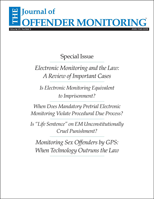Evidence Favors Electronic Monitoring for Improvements in Child Support Collections
Author: Rhonda Zingraff, Ph.D..; Sheenagh Lopez.; Jennifer McCoy.
Source: Volume 21, Number 01, Spring/Summer 2008 , pp.5-9(5)

next article > |return to table of contents
Abstract:
The 1975 amendment to the Social Security Act established child support enforcement programs across the nation, thereby exerting more pressure on noncustodial parents to take responsibility for the wellbeing of their children under 18 years of age. Known as “IV-D programs,” as they were funded through Title IV, Part D, of the Social Security Act, these initiatives now have a sufficient history to cause widespread concern and frustration. By the mid-1990s the momentum for reform of “welfare as we know it”1 included massive discontent not only with single mothers who were too poor to provide adequately for their children but also with “deadbeat dads” who neglected the children they fathered. Sorensen’s estimates concluded that more effective enforcement could generate as much as $34 billion additional funds per year in support of the nation’s children. Not surprisingly, the authorization to intensify enforcement efforts through such mechanisms as mandatory reporting on fathers as a condition of Temporary Assistance to Families in Need (TAFN) payments, suspension of driver’s licenses, wage withholding, and so forth, has been forthcoming, and has had consequences both intended and unintended. For fathers who fit the profile of a divorced man with a full-time legitimate job, these additional coercive measures have either been unnecessary or they have been sufficient to bring forth improved collections. But for the roughly 2.5 million nonresident fathers who do not pay, about whom experts believe approximately one-half are “deadbeat” and the other half are “dead broke” other approaches are needed. This article discusses some of those approaches, including electronic monitoring. The power of EHA to stimulate work activity is perhaps its most important feature as a tool for improving child support collections. The article includes tables: “Profile Comparison for EHA and Jail Cases”, “Labor Force Participation Gains”, and “Payment Compliance Differentials for EHA and Jail Orders” and charts “EHA Summary Data” and “Comparison of EHA and Jail.”Keywords: Child support enforcement
Affiliations:
1: James Madison University; 2: Meredith College; 3: Meredith College.